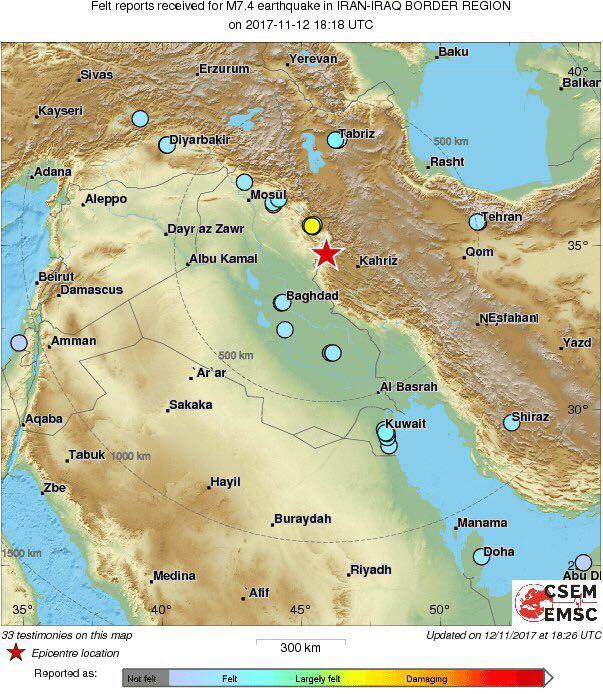According to the seismologic centre of the University of Tehran, the quake was magnitude-7.3 and happened in Ezgeleh village near the Iranian city of Kermanshah.
Meanwhile, the earthquake was reported to be magnitude-7.2 according to the United States Geological Survey and magnitude-7.6 according to European-Mediterranean Seismological Centre (EMSC).
The epicenter of the quake was about 19 km deep, as per the EMSC. The centre was reported by the USGS to be in the southeast of Iraq’s Sulaymaniya province, close to the Iranian border.
It was so strong that it was felt in various cities in Western Iran and even Tehran, and also in the neighbouring countries, particularly Kuwait.
Several aftershocks also jolted the Iranian province of Kermanshah. The University of Tehran has reported at least four aftershocks, the biggest of which was magnitude-4.6.
The earthquake has led to blackout and water cut in Kurdistan, Ilam, and Kermanshah provinces, according to Iran’s Crisis Management Organization.
The earthquake has led to blackout and water cut in Kurdistan, Ilam, and Kermanshah provinces, according to Iran’s Crisis Management Organization.
The earthquake has led to blackout and water cut in Kurdistan, Ilam, and Kermanshah provinces, according to Iran’s Crisis Management Organization.
The earthquake has led to blackout and water cut in Kurdistan, Ilam, and Kermanshah provinces, according to Iran’s Crisis Management Organization.
Iran is one of the most seismically active countries in the world, being crossed by several major fault lines that cover at least 90% of the country. As a result, earthquakes in Iran occur often and are destructive.
The deadliest quake in Iran’s modern history happened in June 1990. It destroyed the northern cities of Rudbar, Manjil, and Lushan, along with hundreds of villages, killing an estimated 37,000 people.
Bam in the country’s southeastern province of Kerman witnessed a strong quake in December 2003 which killed 31,000 people.
